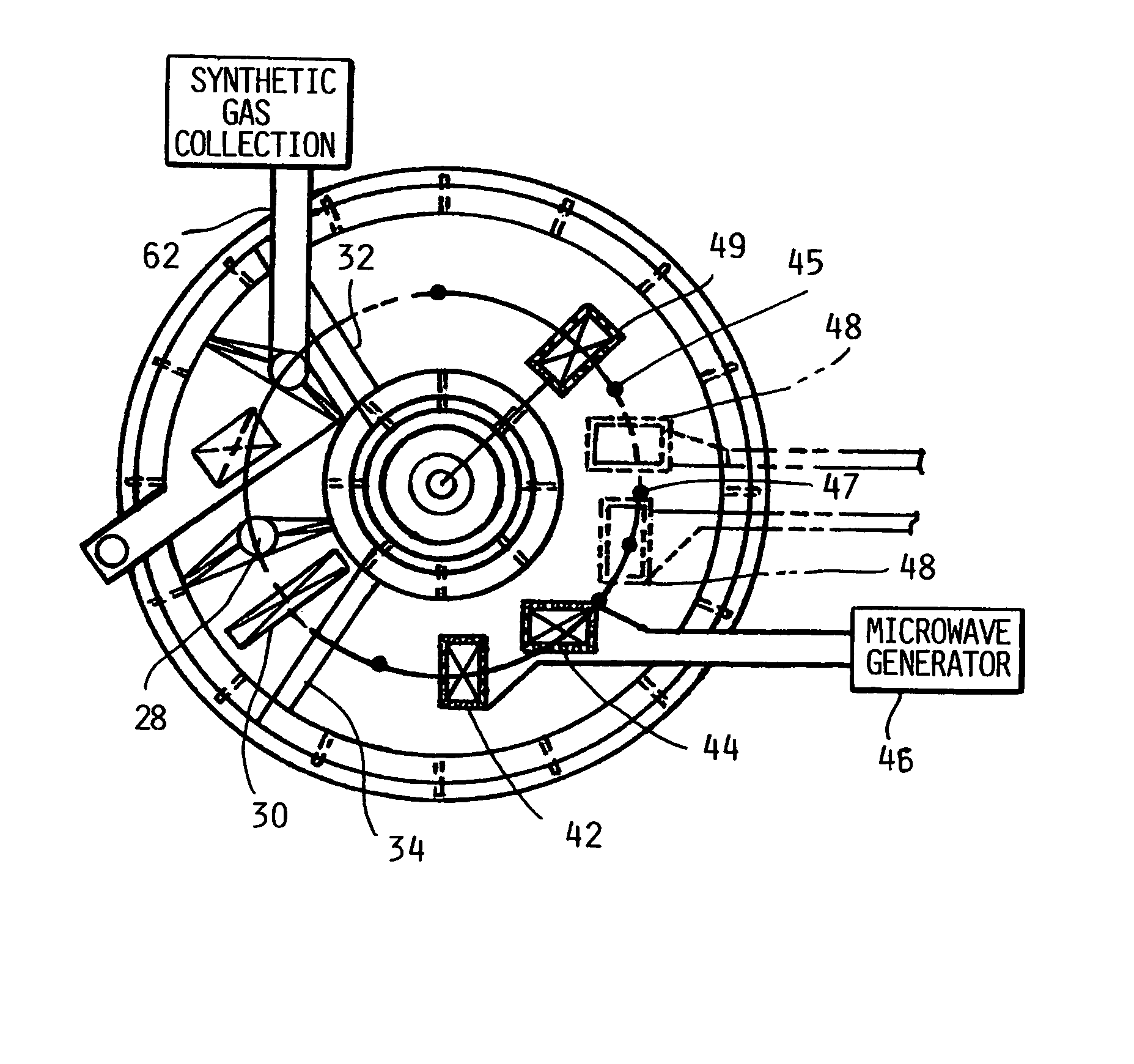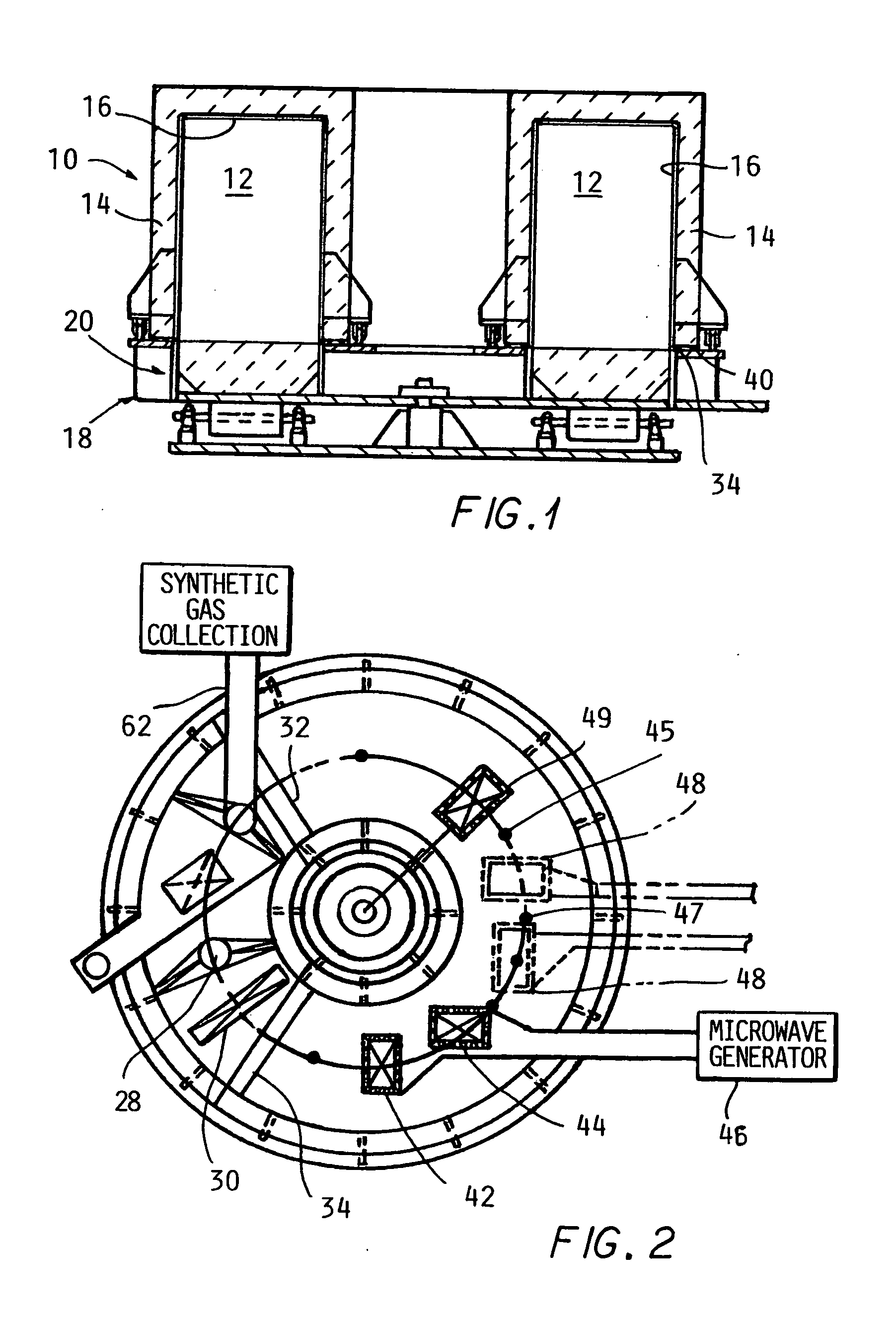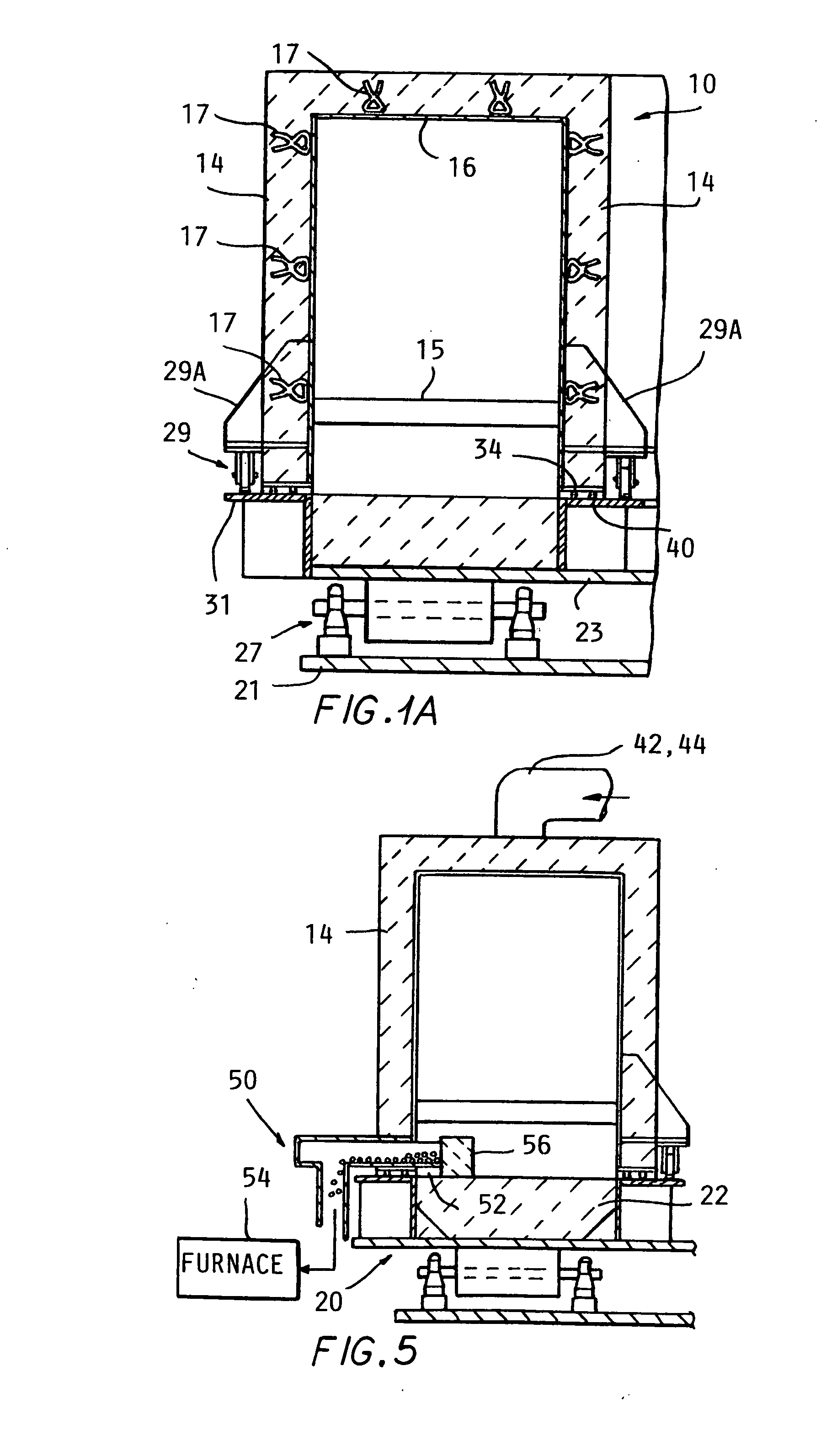Microwave heating method and apparatus for iron oxide reduction
a technology of iron oxide and heating method, which is applied in lighting and heating apparatus, manufacturing converters, furnaces, etc., can solve the problems of large amount of dust and waste energy, need for coke and intense high temperature combustion, and the price of scrap international has doubled, so as to avoid contamination of iron during production, the effect of reducing the cost and reducing the energy consumption
- Summary
- Abstract
- Description
- Claims
- Application Information
AI Technical Summary
Benefits of technology
Problems solved by technology
Method used
Image
Examples
Embodiment Construction
[0039] In the following detailed description, certain specific terminology will be employed for the sake of clarity and a particular embodiment described in accordance with the requirements of 35 USC 112, but it is to be understood that the same is not intended to be limiting and should not be so construed inasmuch as the invention is capable of taking many forms and variations within the scope of the appended claims.
[0040] Referring to the drawings and particularly FIGS. 1-5, a rotary hearth furnace 10 according to the present invention is depicted. This comprises a stationary annular upper chamber 12 having outer walls 14 of a refractory insulating material and an inner skin 16 of stainless steel attached to embedded anchors 17 in the refractory walls 14. A rotating base assembly 18 supports a ring shaped hearth 20 which is rotated beneath the stationary annular chamber 12 by a motor—right angle drive 24 and chain 26. A series of main rollers 27 are mounted on a base plate 21 and...
PUM
| Property | Measurement | Unit |
|---|---|---|
| Temperature | aaaaa | aaaaa |
| Content | aaaaa | aaaaa |
| Refractory | aaaaa | aaaaa |
Abstract
Description
Claims
Application Information
 Login to View More
Login to View More - R&D
- Intellectual Property
- Life Sciences
- Materials
- Tech Scout
- Unparalleled Data Quality
- Higher Quality Content
- 60% Fewer Hallucinations
Browse by: Latest US Patents, China's latest patents, Technical Efficacy Thesaurus, Application Domain, Technology Topic, Popular Technical Reports.
© 2025 PatSnap. All rights reserved.Legal|Privacy policy|Modern Slavery Act Transparency Statement|Sitemap|About US| Contact US: help@patsnap.com



